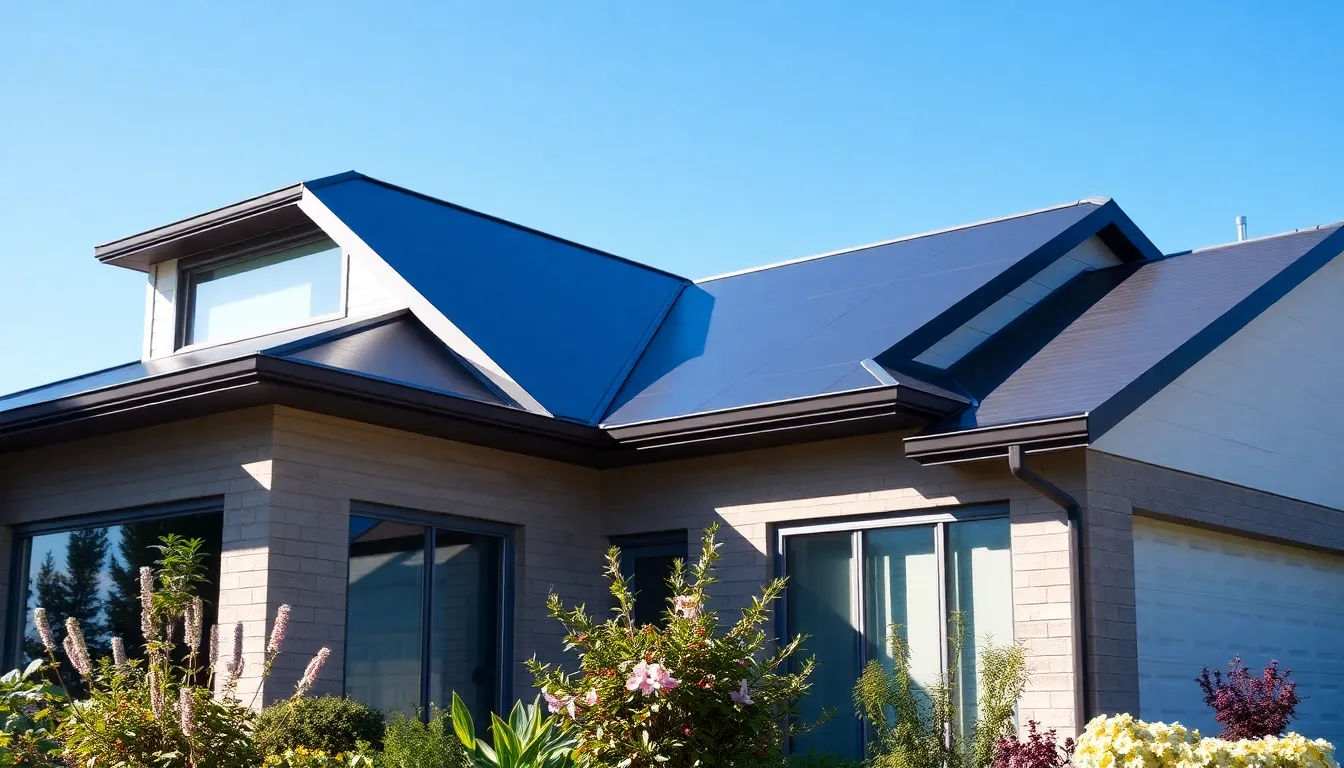When it comes to roofing options, vinyl roofing often gets lost in the shuffle. But this unsung hero boasts features that might make you rethink your choices. Imagine a roof that not only protects your home but also saves you money and enhances its curb appeal. With HomeRocket Realty guiding you, you’ll be armed with all the knowledge to consider vinyl roofing for your next project. Let’s jump into the world of vinyl roofing and discover why it’s a worthy contender.
Table of Contents
ToggleWhat Is Vinyl Roofing?

Vinyl roofing, also known as PVC roofing, is a type of flat roofing system that uses polyvinyl chloride membranes. This material is prized for its durability, flexibility, and resistance to extreme weather conditions. Often seen on commercial buildings, its appeal is beginning to stretch into residential properties as well.
Imagine a thick sheet of plastic that can withstand the test of time and is virtually maintenance-free. That’s vinyl roofing in a nutshell. It’s installed in large sheets, eliminating many seams, which reduces the chance of leaks. Homeowners can enjoy peace of mind knowing they’ve chosen a reliable option devoid of frequent repairs.
Benefits of Vinyl Roofing
Vinyl roofing packs several benefits that can turn any skeptics into believers. Here are some key perks:
- Durability: Vinyl roofs are resistant to moisture, UV rays, and extreme temperatures, making them last for decades if maintained properly.
- Cost-Effective: While the upfront cost might be higher than asphalt shingles, the longevity can save homeowners money in the long run.
- Low Maintenance: Vinyl roofing requires minimal maintenance compared to other materials. A quick rinse with a hose can make it look new again.
- Energy Efficiency: With many vinyl roofing products incorporating reflective materials, homeowners can enjoy lower energy bills.
- Stylish Options: Available in a variety of colors and styles, vinyl roofing can suit any aesthetic, from modern to traditional.
Installation Process of Vinyl Roofing
Installing vinyl roofing might seem daunting, but it’s straightforward, especially with professionals at the helm. Here’s a brief overview of the steps involved:
- Preparation: The existing roof surface is cleaned, repairing any damage beforehand.
- Insulation: A suitable underlayment or insulation board is then laid out to improve energy efficiency.
- Installation of Membrane: Large sheets of vinyl are rolled out and secured with fasteners or adhesives, depending on the method chosen.
- Seaming: Seams between sheets are welded together, ensuring watertight integrity.
- Final Inspection: After installation, a thorough inspection is crucial to catch any potential issues before they arise.
Maintenance Tips for Vinyl Roofing
Maintaining vinyl roofing is a breeze compared to other types. But, a few simple steps can keep it looking fresh and functioning well:
- Regular Cleaning: At least twice a year, homeowners should wash the roof to prevent dirt buildup. A garden hose and a soft-bristle brush will do the trick.
- Inspect Closely: Seasonal inspections can catch issues early. Look for any signs of damage or wear, better safe than sorry.
- Trim Overhanging Branches: Keeping branches at bay reduces debris buildup and the chances of puncturing the vinyl.
- Clear Debris: Removing leaves and other debris promptly will help maintain drainage and prevent mold growth.
Cost Analysis of Vinyl Roofing Compared to Other Materials
When considering roofing materials, cost is always a significant factor. Vinyl roofing may have a higher initial cost compared to asphalt shingles, but here’s the kicker, it often outlasts many other options.
- Vinyl Roofing: Typically ranges from $3 to $7 per square foot, depending on thickness and quality.
- Asphalt Shingles: Usually costs between $1 to $5 per square foot, but needs frequent replacements.
- Metal Roofing: Generally ranging from $5 to $12 per square foot, making it pricier but very durable.
In the grand scheme of things, while vinyl may be more expensive upfront, its longevity means fewer replacements and repairs. It’s an investment that pays dividends over time.
Environmental Impact of Vinyl Roofing
Concern for the environment is leading many to question materials used in construction. Vinyl roofing has its pros and cons. On one hand, it is derived from petroleum, raising some eyebrows about its environmental footprint. But, here are some positive aspects to consider:
- Longevity: Vinyl roofing is designed to last decades, reducing the need for frequent replacements.
- Recyclability: Many manufacturers offer recycling programs, which take old roofing materials and repurpose them, reducing landfill waste.
Eventually, while vinyl roofing isn’t without its controversies, advancements in technology are continually improving its sustainability.





